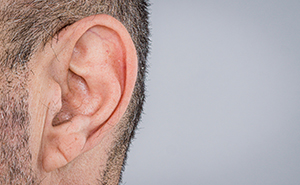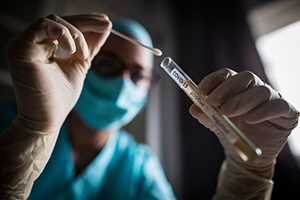August 2022 News Roundup
This month features DNR suspensions for TAVI, no-stent PCI, an unexpected case of cardiac sarcoma, and more.

Every month, Section Editor L.A. McKeown curates a roundup of recent news tidbits from journals and medical meetings around the globe.
Approximately 75% of patients undergoing TAVI have their do not resuscitate (DNR) status suspended, with reinstation varying widely from within 48 hours after the procedure to more than 30 days post-discharge. For the study, published in the Journal of the American Geriatrics Society, investigators interviewed TAVI coordinators from 52 programs in the United States.
 Results of an evidence-based HF self-care pilot program, published in Critical Care Nurse, show that it successfully lowered rates of 30-day readmissions. Implemented on a telemetry unit, the program helped improve knowledge, early symptom recognition, lifestyle modification, and adherence to medications, treatment plan, and follow-up appointments. “The multidisciplinary team approach to the heart failure program reduced gaps in care and improved coordination and transition of care,” the researchers write.
Results of an evidence-based HF self-care pilot program, published in Critical Care Nurse, show that it successfully lowered rates of 30-day readmissions. Implemented on a telemetry unit, the program helped improve knowledge, early symptom recognition, lifestyle modification, and adherence to medications, treatment plan, and follow-up appointments. “The multidisciplinary team approach to the heart failure program reduced gaps in care and improved coordination and transition of care,” the researchers write.
In Clinical Research in Cardiology, SCRAP study investigators describe good safety and efficacy of their decision algorithm for no-stent PCI in stable CAD patients at 1 year. The algorithm, which the investigators tested daily in consecutive patients, is based on a combination of scoring balloon angioplasty and drug-coated balloon as a first-line approach.
 Frank’s sign, a diagonal crease across the bottom of the earlobe, is believed to be associated with cerebrovascular disease and CAD, but it’s true incidence is unknown. In a case report in Stroke, investigators ponder how this overlooked clinical finding might be an important prompt for screening patients for early diagnosis and treatment of multifocal vascular disease.
Frank’s sign, a diagonal crease across the bottom of the earlobe, is believed to be associated with cerebrovascular disease and CAD, but it’s true incidence is unknown. In a case report in Stroke, investigators ponder how this overlooked clinical finding might be an important prompt for screening patients for early diagnosis and treatment of multifocal vascular disease.
A study of over 200 chronic total occlusion PCIs that were reattempted due to failure found that about three-quarters of the procedures were successful, with the best chances for success involving subintimal plaque modification with guidewire crossing, referral to high-volume operators, bilateral angiography, and bidirectional approach. An accompanying editorial in JACC: Cardiovascular Interventions notes that these factors, along with waiting for 2 to 3 months before the reattempt, can help ensure that the initial failure does not preclude future success.
A 19-year-old man with no significant medical history other than anemia presented to an emergency department for exercise-related syncope following a recent transcontinental flight to the United States. Researchers reporting the case in JACC: Case Reports describe finding a large intracardiac mass, which was diagnosed as a primary cardiac synovial sarcoma. After surgical removal of the mass, the patient returned to his country and completed six cycles of adjuvant chemotherapy with no residual disease seen on imaging.
 HDL cholesterol, which is generally considered to be protective, may confer an increased risk for CV events in men with hypertension and very high HDL levels (> 80 mg/dL vs < 40 mg/dL; P = 0.02), according to a study in Hypertension. The same observation was not seen in women.
HDL cholesterol, which is generally considered to be protective, may confer an increased risk for CV events in men with hypertension and very high HDL levels (> 80 mg/dL vs < 40 mg/dL; P = 0.02), according to a study in Hypertension. The same observation was not seen in women.
A Japanese study in the Journal of Cardiology that looked at the clinical course of patients with chronic limb-threatening ischemia (CLTI) who developed COVID-19 while hospitalized for endovascular therapy found that they were three times more likely to die within 30 days than similar endovascular therapy patients with CLTI treated in 2019, prior to the pandemic.
L.A. McKeown is a Senior Medical Journalist for TCTMD, the Section Editor of CV Team Forum, and Senior Medical…
Read Full Bio


Comments